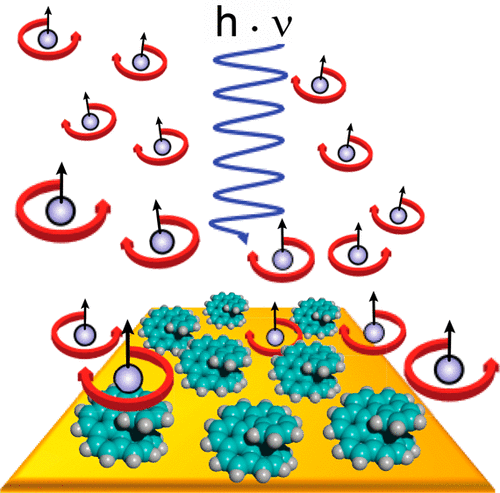The interaction of low-energy photoelectrons with well-ordered monolayers of enantiopure helical heptahelicene molecules adsorbed on metal surfaces leads to a preferential transmission of one longitudinally polarized spin component, which is strongly coupled to the helical sense of the molecules. Heptahelicene, composed of only carbon and hydrogen atoms, exhibits only a single helical turn but shows excess in longitudinal spin polarization of about PZ = 6 to 8 after transmission of initially balanced left- and right-handed spin polarized electrons. Insight into the electronic structure, that is, the projected density of states, and the spin-dependent electron scattering in the helicene molecule is gained by using spin-resolved density functional theory calculations and a model Hamiltonian approach, respectively. Our results support the semiclassical picture of electronic transport along a helical pathway under the influence of spin-orbit coupling induced by the electrostatic molecular potential.

The interaction of low-energy photoelectrons with well-ordered monolayers of enantiopure helical heptahelicene molecules adsorbed on metal surfaces leads to a preferential transmission of one longitudinally polarized spin component, which is strongly coupled to the helical sense of the molecules. Heptahelicene, composed of only carbon and hydrogen atoms, exhibits only a single helical turn but shows excess in longitudinal spin polarization of about PZ = 6 to 8 after transmission of initially balanced left- and right-handed spin polarized electrons. Insight into the electronic structure, that is, the projected density of states, and the spin-dependent electron scattering in the helicene molecule is gained by using spin-resolved density functional theory calculations and a model Hamiltonian approach, respectively. Our results support the semiclassical picture of electronic transport along a helical pathway under the influence of spin-orbit coupling induced by the electrostatic molecular potential.
